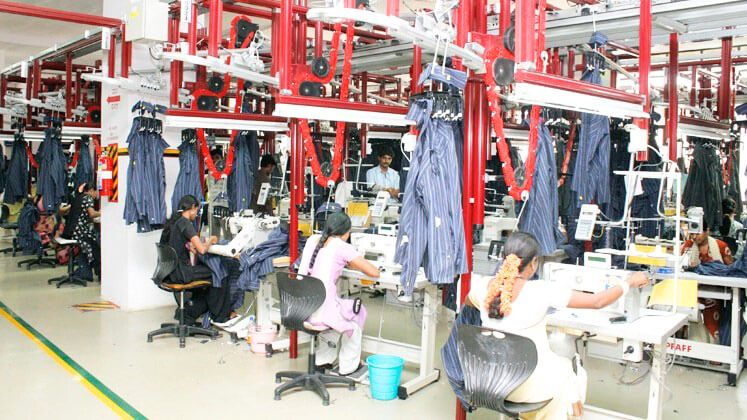The Rise of Bangladesh’s Garment Industry: A Global Success Story
In the global landscape of apparel manufacturing, Bangladesh has emerged as a powerhouse, ranking as the second-largest exporter of readymade garments (RMG) in the world—just behind China. This transformation didn’t happen overnight. It is the result of decades of strategic planning, competitive advantages, and relentless efforts from stakeholders across the public and private sectors.
From a humble start in the 1980s, the RMG sector now accounts for more than 84% of the country’s total exports, employing over 4 million workers, most of whom are women. Bangladesh’s rise in this space is not just a national success—it’s a globally recognized case study in how emerging economies can achieve rapid industrial growth through focused specialization.
The Early Years: From Modest Beginnings to Mass Production
Bangladesh’s journey in garment manufacturing began in the late 1970s, with the launch of a small number of export-oriented factories. One of the pioneering companies was Desh Garments, which collaborated with Daewoo Corporation of South Korea for technical assistance and training. This partnership laid the groundwork for large-scale apparel manufacturing in the country.
By the 1990s, favorable trade policies, a large and affordable labor force, and growing global demand allowed the industry to expand rapidly.
👉 Learn more about the sector’s foundation from the Bangladesh Garment Manufacturers and Exporters Association (BGMEA).
Key Growth Drivers of Bangladesh’s Garment Industry
1. Cost-Competitiveness
One of the most attractive factors for international buyers is Bangladesh’s competitive labor cost. The country offers some of the lowest manufacturing wages globally, which significantly reduces production costs.
2. Preferential Trade Access
Bangladesh enjoys duty-free and quota-free access to major markets like the European Union under the GSP (Generalized System of Preferences) and to Canada, Australia, and Japan under various trade frameworks.
-
Explore Bangladesh’s trade preferences via the European Commission – GSP.
3. Massive Workforce Availability
With a workforce of over 4 million in the RMG sector—about 60% of whom are women—the industry benefits from a reliable and efficient labor pool. This has also had social impact, empowering women and contributing to gender equity in the workforce.
4. Backward Linkage Industries
Bangladesh has developed a strong backward linkage in spinning, weaving, dyeing, and finishing. Local production of yarn and fabric helps reduce lead times and improve export competitiveness, especially for knitwear.
The Global Brands That Manufacture in Bangladesh
Many of the world’s top apparel brands source from Bangladesh, including:
-
H&M
-
Zara (Inditex)
-
UNIQLO
-
Marks & Spencer
-
Gap Inc.
-
Tommy Hilfiger
-
Walmart
These companies rely on Bangladesh not just for cost savings but also for compliance with social and environmental standards, thanks to ongoing reforms and upgrades in the sector.
Bangladesh: A Leader in Green Manufacturing
One of the lesser-known success stories is Bangladesh’s leadership in green garment manufacturing. The country is home to over 200 LEED-certified green factories, including 10 of the top 12 in the world.
These factories are recognized for:
-
Energy-efficient buildings
-
Water-saving technologies
-
Waste management systems
-
Worker-friendly environments
👉 Check out the list of certified green factories via the U.S. Green Building Council (USGBC).
This push toward sustainability is attracting eco-conscious global brands that are aligning their supply chains with climate goals.
Digitalization and Innovation in Garment Production
To meet global standards and reduce delivery lead times, the industry is rapidly embracing digital transformation:
-
CAD and 3D design software for rapid prototyping
-
Digital fabric printing
-
Automated cutting and sewing
-
ERP systems for real-time inventory and supply chain tracking
Industry 4.0 tools are being adopted to streamline operations, ensure quality control, and reduce waste—boosting overall competitiveness.
Policy Support and Infrastructure Development
The government of Bangladesh has played a pivotal role in supporting the garment industry:
-
Bonded warehouse facilities to ease import-export operations
-
Export Processing Zones (EPZs) offering tax incentives and streamlined services
-
Investment incentives under the Bangladesh Investment Development Authority (BIDA)
Infrastructure upgrades, including Padma Bridge and deep seaports, are reducing transportation time and expanding logistics capacity—further enabling timely delivery of export goods.
Challenges That Persist
Despite its achievements, the RMG sector in Bangladesh faces several challenges:
1. Compliance and Labor Standards
Incidents like the Rana Plaza collapse in 2013 forced global attention on workplace safety. Since then, significant reforms have been made under initiatives like:
-
Accord on Fire and Building Safety
-
Alliance for Bangladesh Worker Safety
Nevertheless, continuous monitoring is essential to sustain progress.
2. Dependency on a Single Sector
With over 80% of exports coming from garments, there’s an urgent need to diversify export portfolios to reduce economic vulnerability.
3. Energy and Environmental Constraints
With increasing production comes greater energy demand and environmental impact. Moving toward renewables and circular economy models is essential.
The Road Ahead: Toward a $100 Billion Export Goal
The government has set an ambitious target to reach $100 billion in garment exports by 2030. To achieve this, the industry must:
-
Invest in automation and upskilling
-
Explore new markets in Latin America, Africa, and the Middle East
-
Adopt sustainable sourcing and production practices
-
Enhance value addition, shifting from basic garments to high-end fashion
👉 Stay updated with policy trends and data from the Export Promotion Bureau of Bangladesh.
Conclusion
The success of Bangladesh’s garment industry is not just about low-cost labor—it’s about resilience, adaptability, and commitment to quality and compliance. With a clear focus on innovation, green manufacturing, and skilled labor, the RMG sector is well-positioned to remain a key player in global fashion supply chains.
As the world demands more sustainable and ethical sourcing, Bangladesh has the opportunity to redefine itself—not just as a volume producer, but as a value-driven, tech-enabled, and socially responsible apparel hub.
Explore more trade and export insights at Bangladesh-Agent.com
